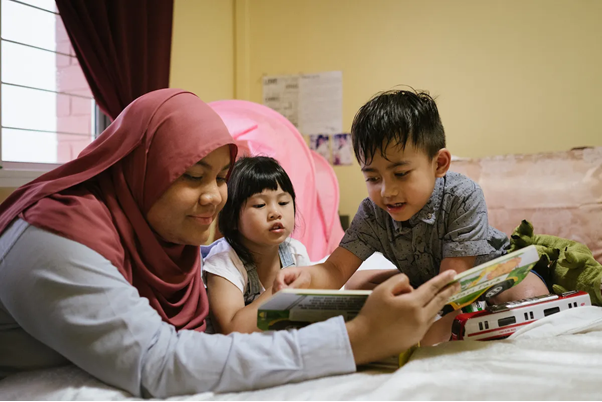Families For Life | Introducing Your Child To The World Of Words
Photos taken in collaboration with Larry Toh
As parents, we want to constantly expose our children to high-quality language because we understand that language acquisition is the foundation of reading, writing, and communication.
Immersing your children in a print-rich environment where they can interact with many different forms of printed language, is important for developing their language skills. That’s because this helps them realise that we can also communicate through the written word.
It is easier for children to learn to read and write in an environment that has lots of print in it because it shows them what reading and writing can be used for. A print-rich environment also spurs an interest in writing because children model what they see around them and try to communicate in the same way.
Here are some ideas on how to immerse your children in a print-rich environment.

1. Make labels
The first thing to do is to make your child’s living space print-rich is labelling objects and areas at home.
You can either write or print the labels – just ensure that the letters are large enough and place them at your child’s eye level.
Label anything that children see and come into contact with frequently, such as toy boxes, markers, blocks and doors.
2. Point out prints wherever you go
Ordinary household routines and activities can be used as learning experiences to immerse your children in printed language.
Your children’s first exposure to print would be from household items such as food and toy packaging as well as words printed on their clothes or clothing labels.
When you take them outside the home, point out signage such as names of roads, words on road markings and product signage at supermarkets. Tell them about the printed words on the packaging and signage and explain what they say.
As you highlight the words on signages, you’re teaching your children important concepts about print – that words are read from left to right, as well as top to bottom and that there are spaces between words and that words can be made up of a single letter.
3. Set up a reading corner
Provide your children with a place at home where they can enjoy reading, stocked with a variety of books on bookshelves that are easily accessible so that even the younger ones can reach for the books easily. Provide comfortable chairs or cushions where your children can relax and indulge in reading.
Young children love to explore books (and even chew them up!) with vivid pictures, colourful illustrations and simple text. Good examples of books for young children include lift-the-flap and touch-and-feel books that are interactive and attract your little ones to read them.
With these simple ideas to introduce your child to the world of words, you’re well on your way to building a stronger foundation for them to develop their language skills, which are crucial for their schooling years!
_19969ABF86CB46C17E25F76D137CF6CB40625DDA513D079B516D53983D563912.png)
 (1)_096A481B9564D278B29681AF28AE5B167E872A4EAA5516FC1165B3E50AD6CFFF.png)
_DC920F7048D86857244CA1CF64BD16DB19CA17E70A895580B74948D81C9CE0E6.png)
_1D2434CA9B30F0AE3E24B434A8F1363BAD367A5353A2299BCFF3EB27911BD364.png)